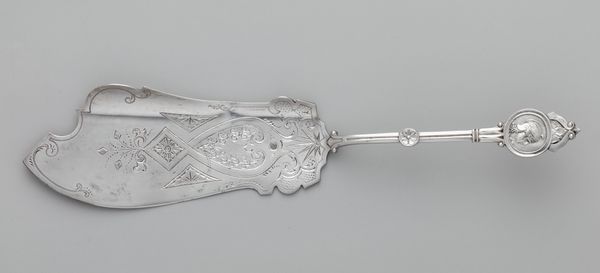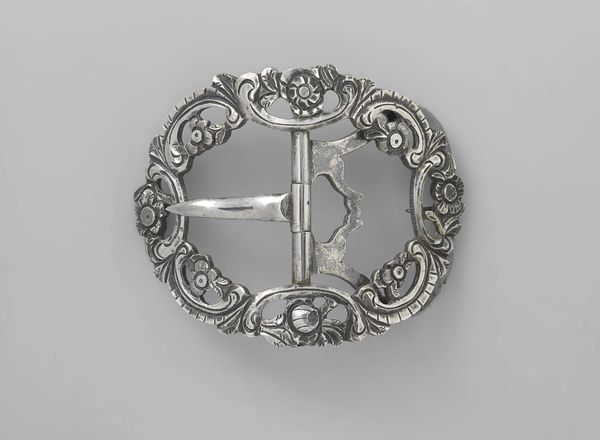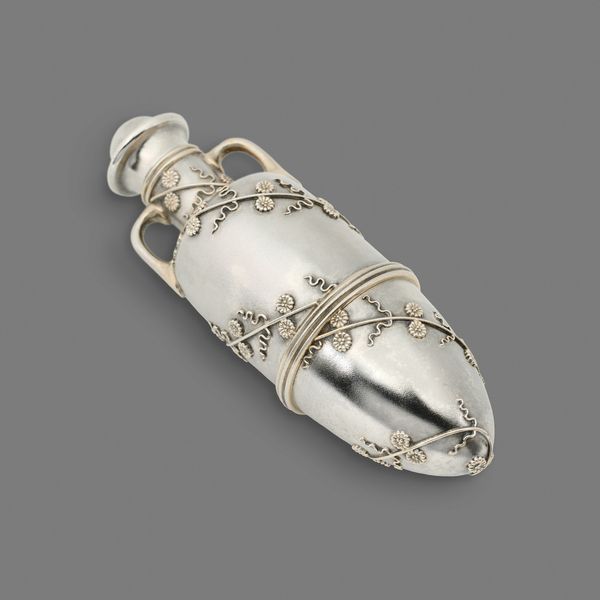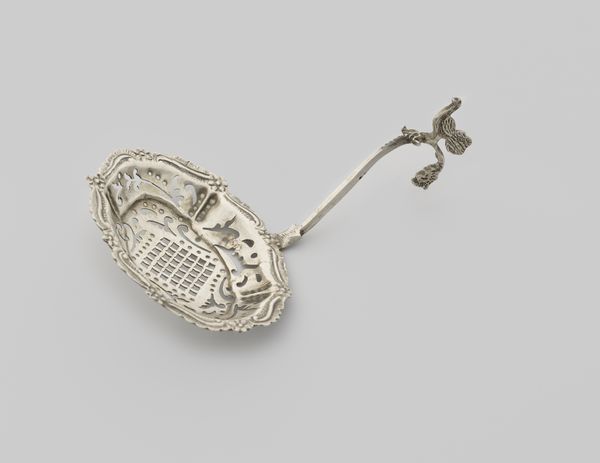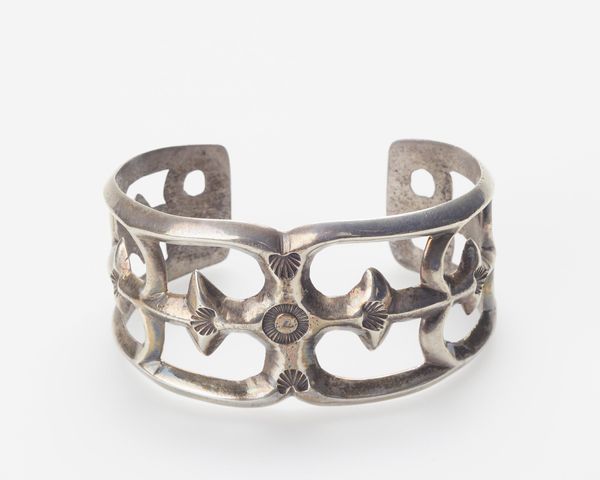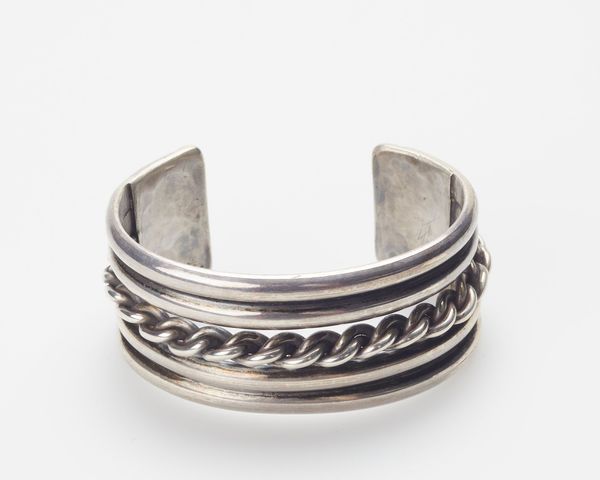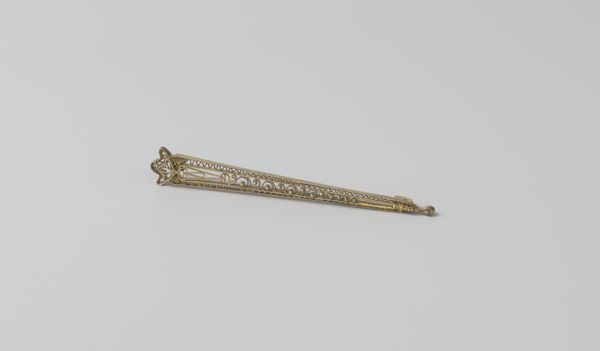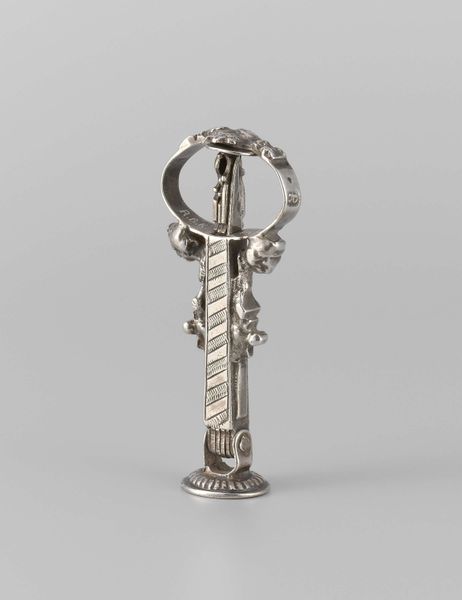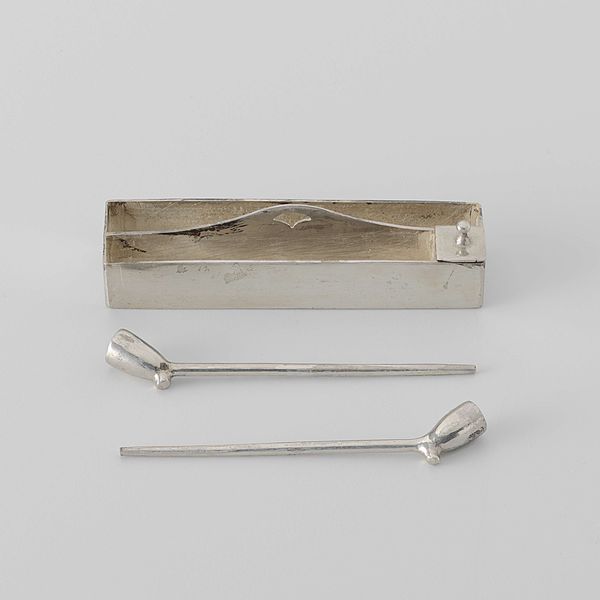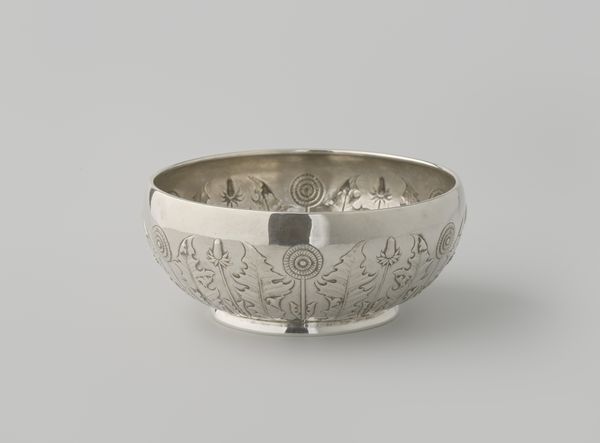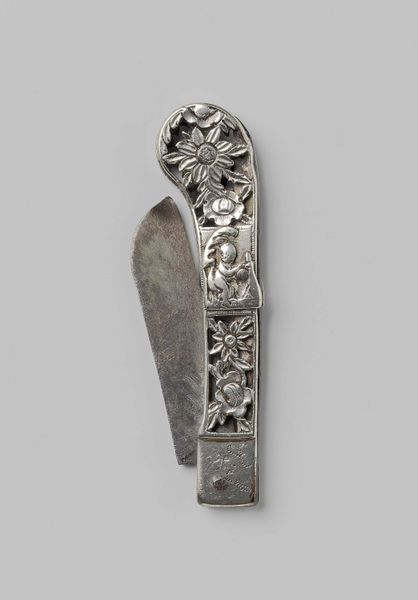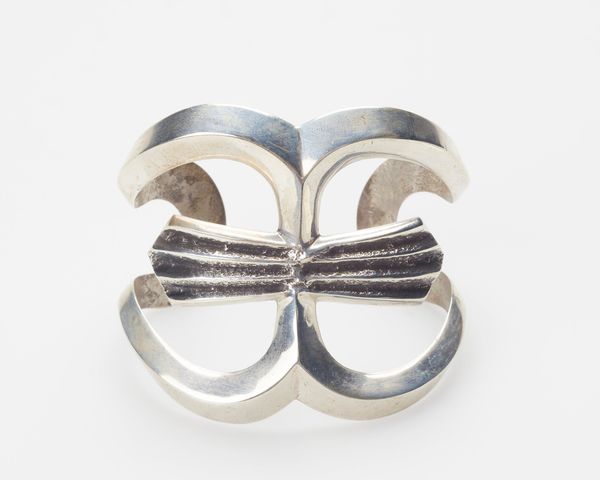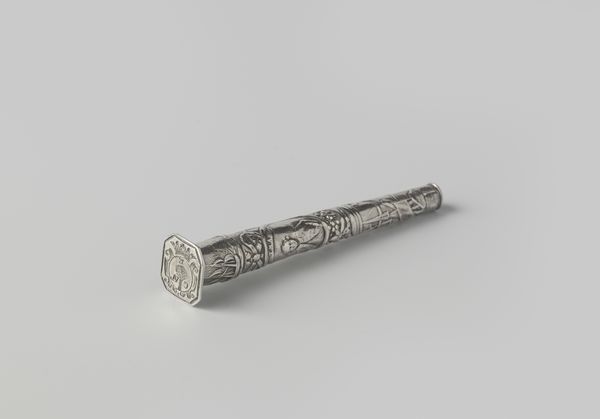
Dimensions: 15/16 x 5 1/4 in. (2.4 x 13.3 cm); 1 oz. 8 dwt. (43.1 g)
Copyright: Public Domain
These sugar tongs were crafted in 18th-century New York by Myer Myers, a silversmith of Jewish heritage. They’re made of silver, a material reflecting wealth and status in colonial society. In this era, sugar was a luxury commodity, closely tied to the transatlantic slave trade. Owning decorative items like these tongs signaled participation in a social hierarchy built on exploitation. The tongs’ intricate design, incorporating motifs like shells, embodies the refined tastes of the elite. The very act of using such a tool, rather than simply taking a sugar lump by hand, was a performance of gentility. Studying objects like these helps us uncover the complex social dynamics of the past. We can trace how consumer culture, artistic expression, and economic systems were intertwined. By exploring historical records, such as merchant ledgers and family papers, we start to understand how art objects both reflected and shaped the world around them.
Comments
No comments
Be the first to comment and join the conversation on the ultimate creative platform.
